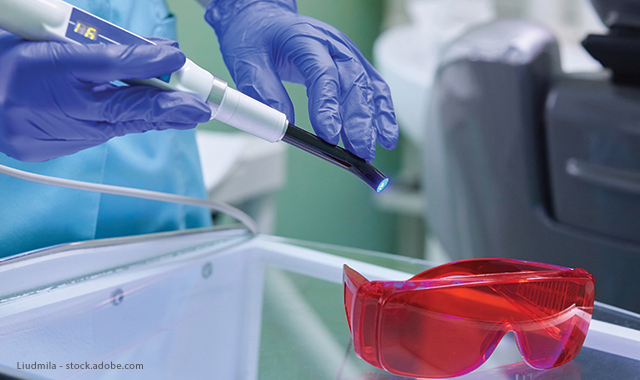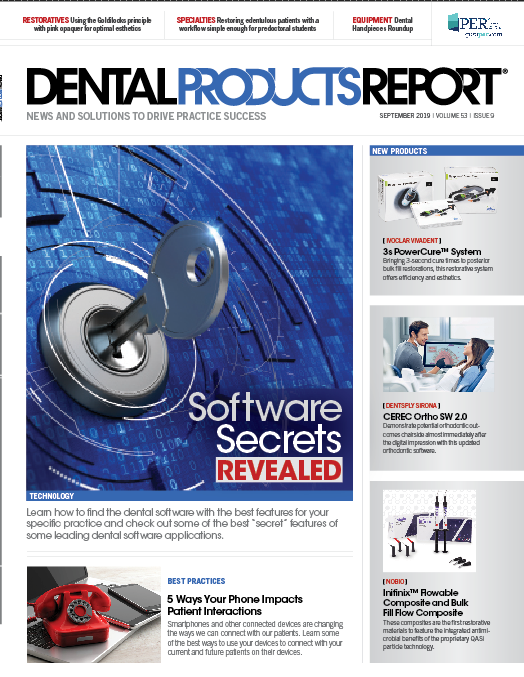How asking ‘why’ can make you a better dentist
Having key data at your fingertips can take the guesswork out of the curing process.

As healthcare specialists, we’re required to master a lot of skills. In dentistry, we not only have to develop the dexterity and skills to perform our profession, but we also have to become extremely knowledgeable about everything our profession deals with. In some healthcare careers, you can get by with sharp mental acuity, but not dentistry. When it comes to our profession, we need the hands of an artist and the mind of a philosopher.
I’ve always been a “why guy.” Whenever someone would be teaching me how to do something, invariably at several points in the learning process I’d ask, “why?” There were times when this tendency was a valuable trait to have, but more frequently, it was met with annoyance-on a good day. On a bad day, it was met with worse. “What are you? A three-year-old?” a construction foreman once asked me.
That tendency worked about equally well when I was in dental school. Because I didn’t bother to explain “why” I was asking why, many took it as my way of questioning their authority. However, nothing could’ve been further from the truth. I was asking because they were experts and I wanted to get as much of their knowledge into my brain as possible.
That one simple little word has done a lot for me over the years. As I progressed in my practice and began to expand my horizons, the word “why” took on a whole new meaning. The thing that finally dawned on me is a doctor must know the “why” behind his or her decisions, procedures and results. I’ve often said you could teach anyone with good hand skills to be a decent procedural dentist, but that person would have no idea of the “doctor” portion of the profession. Doctors need to know the “whys.”
More from the author: Improving patient communication with VoIP
As I became more immersed in the “whys,” it opened a rabbit hole of possibilities, and the one thing that bothered me more than anything else was to NOT know why. Sometimes it was simply because no one had the answer yet, but often, I just hadn’t dug deep enough.
This discussion can really be articulated with a look at the science behind bonded restorations. There’s a lot of science behind composites and a lot of it deals with the process of curing. I’ve taken to saying “the curing light is like the stepchild of adhesive dentistry. It’s always there, but nobody pays any attention to it.” That’s because, short of a radiometer, there really isn’t a lot you can judge the light by. Most clinicians just figure if the light is blue, then it has to be working.

However, there’s a lot more to it than that. Both the wavelength and the intensity of the light can affect long-term clinical results. There’s also the physics of the composite shade that can alter the depth of curing achieved. As you can see, this brings a lot of variables into play.
Now, the big question I have for you is, “Would you like to have all the necessary curing information right at your fingertips?” Even better, what if that information was constantly updated and scientifically calibrated on an ongoing basis? I thought you might like that.
I’ve recently been introduced to a company called BlueLight Analytics. Its mission is to take the guesswork out of the curing process and replace it with scientifically valid data.
As I said earlier in this article, short of a radiometer that measures how intense your light it, there really hasn’t been much for us to use when it comes to validating our light curing processes. However, BlueLight Analytics is about to change all of that.
The company has developed a device that’s about the size of a hockey puck. This device is cordless and charges an internal battery from a standard USB micro cable (the same one used with Android phones). The device is Bluetooth-enabled and connects to your smartphone. An app is downloaded to the phone and communicates with the “puck.”
Continue reading on page two...
Before using the device, you open the app and select the type of curing lights you use in your practice. You can list each light individually. The next step is to select which light-cured materials you use in your practice.
Once all lights and materials are selected, you hold the light against the port on the device and turn on the light. The device will quickly determine the light output of your light in precise mw/cm2 readings. However, the science doesn’t end there. The app also evaluates what composite you’re using and offers curing times for each brand of composite as well as times for each shade! This means in a few short seconds, you know exactly how strong your light is as well as how long you need to cure your restorations.
Related reading: Evaluating light curing units for three bulk-cured composites
Suddenly, you not only know the “why,” but you also completely understand the importance of curing times dealing with varying shades of composite. We all know darker composite takes more cure cycles, but how much longer? Now, we have those answers.
One of the other facts not many practitioners know is curing lights don’t maintain the same output throughout their lifetimes. Age can affect output, which means a light that needed 10 seconds last year might require 20 seconds this year. Oh, and how do you compensate for the shade of the composite with those changes? Now you know.

Thanks to the science developed by the smart minds at BlueLight Analytics, you now have a lot of answers at your fingertips. Not only do you now know if your light is working and how well, but you also get solutions to problems when your light begins to degrade.
Inadequate curing can lead to multiple problems. Composites that are incompletely cured aren’t as durable. When loaded with occlusal forces, these materials flex more than the surrounding tooth structure. This leads to fracturing of the material in both its total volume as well as along the margins. This can lead to recurrent caries as well as possible tooth fracture.
Incomplete curing can also lead to pain upon occlusion as the material flexes and creates a pressure differential across the dentinal tubules.
These types of problems can occur for a variety of reasons and coming up with the correct solution means having access to as much data as possible. BlueLight Analytics is helping to provide data that will allow you to head off problems before they start. While not on the market just yet, expect to see and hear from this company very soon.
